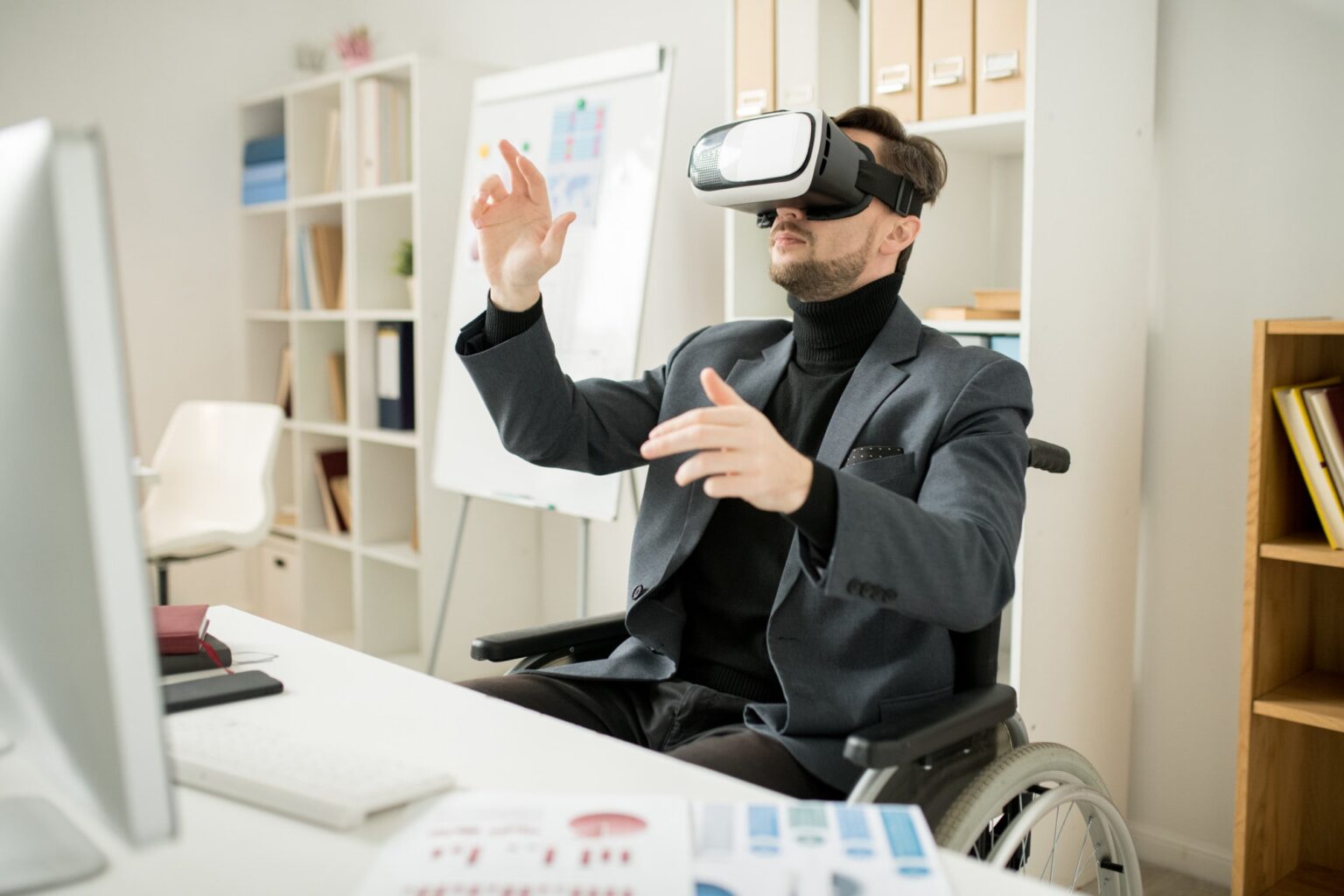Haptics, the science of touch, plays a vital role in augmenting virtual experiences in Augmented Reality (AR) and Virtual Reality (VR). By incorporating haptic feedback, AR/VR technologies can provide users with a sense of touch, enhancing immersion, realism, and interactivity. Here’s how haptics enriches AR/VR experiences:
- Tactile Feedback: Haptic feedback adds a sense of touch to virtual environments. By using vibrations, forces, or pressure, haptic devices simulate the sensation of touching virtual objects or surfaces. Users can feel textures, shapes, and movements, making the virtual experience more engaging and realistic.
- Enhanced Immersion: Haptics deepen the sense of presence and immersion in AR/VR. When users can feel the virtual environment through haptic feedback, it creates a stronger connection between the user and the virtual world. This heightened immersion enhances the overall experience and makes it more convincing and memorable.
- Interactivity and Realism: Haptics enable interactive and realistic interactions with virtual objects. Users can experience the physical properties of objects such as weight, resistance, or elasticity, making the interactions feel more natural and intuitive. Haptic feedback adds a new dimension to user interactions, enabling a deeper level of engagement and realism.
- Spatial Awareness: Haptics helps users develop a sense of spatial awareness in virtual environments. Through haptic cues, users can perceive the position, orientation, and distance of virtual objects, enhancing their understanding of the virtual space. This spatial awareness improves navigation, object manipulation, and overall user performance in AR/VR applications.
- Training and Skill Development: Haptic feedback is valuable in training and skill development scenarios. By simulating the sensation of touch, haptic devices can provide trainees with feedback on their movements, allowing them to refine their motor skills and hand-eye coordination. This is particularly beneficial in fields such as surgical training, industrial simulations, and sports training.
- Accessibility and Inclusivity: Haptics contributes to the accessibility and inclusivity of AR/VR experiences. Users with visual or auditory impairments can still engage with virtual content through haptic feedback. For example, haptic cues can guide users through a virtual environment or provide information without relying solely on visual or auditory cues.
- Emotional and Social Engagement: Haptics can evoke emotional and social responses in AR/VR experiences. For instance, haptic feedback can simulate the sensation of a handshake, a hug, or a high-five, creating a sense of connection and social presence with virtual characters or other users. This enhances emotional engagement and social interactions within virtual environments.
- Safety and Risk Mitigation: Haptics can be used to enhance safety and mitigate risks in training simulations or dangerous environments. By providing haptic feedback in response to hazardous situations or incorrect actions, users can learn to avoid potential risks and develop safer practices. Haptic feedback can also warn users about virtual hazards, improving user safety and reducing accidents.
- Cross-modal Perception: Haptics can enhance cross-modal perception by synchronizing haptic feedback with visual and auditory cues. When multiple senses are stimulated simultaneously, it improves the overall perception and comprehension of virtual experiences. This synchronization can be used to create more cohesive and realistic multisensory experiences.
- Innovation and Future Possibilities: Haptics in AR/VR is an area of ongoing research and innovation. Advancements in haptic technologies, such as wearable haptic devices or haptic gloves, continue to expand the possibilities for touch-based interactions in virtual environments. Future developments may include more precise and nuanced haptic feedback, allowing for even more realistic and immersive experiences.
Haptics significantly enriches AR/VR experiences by adding a sense of touch, enhancing immersion, interactivity, and realism.



